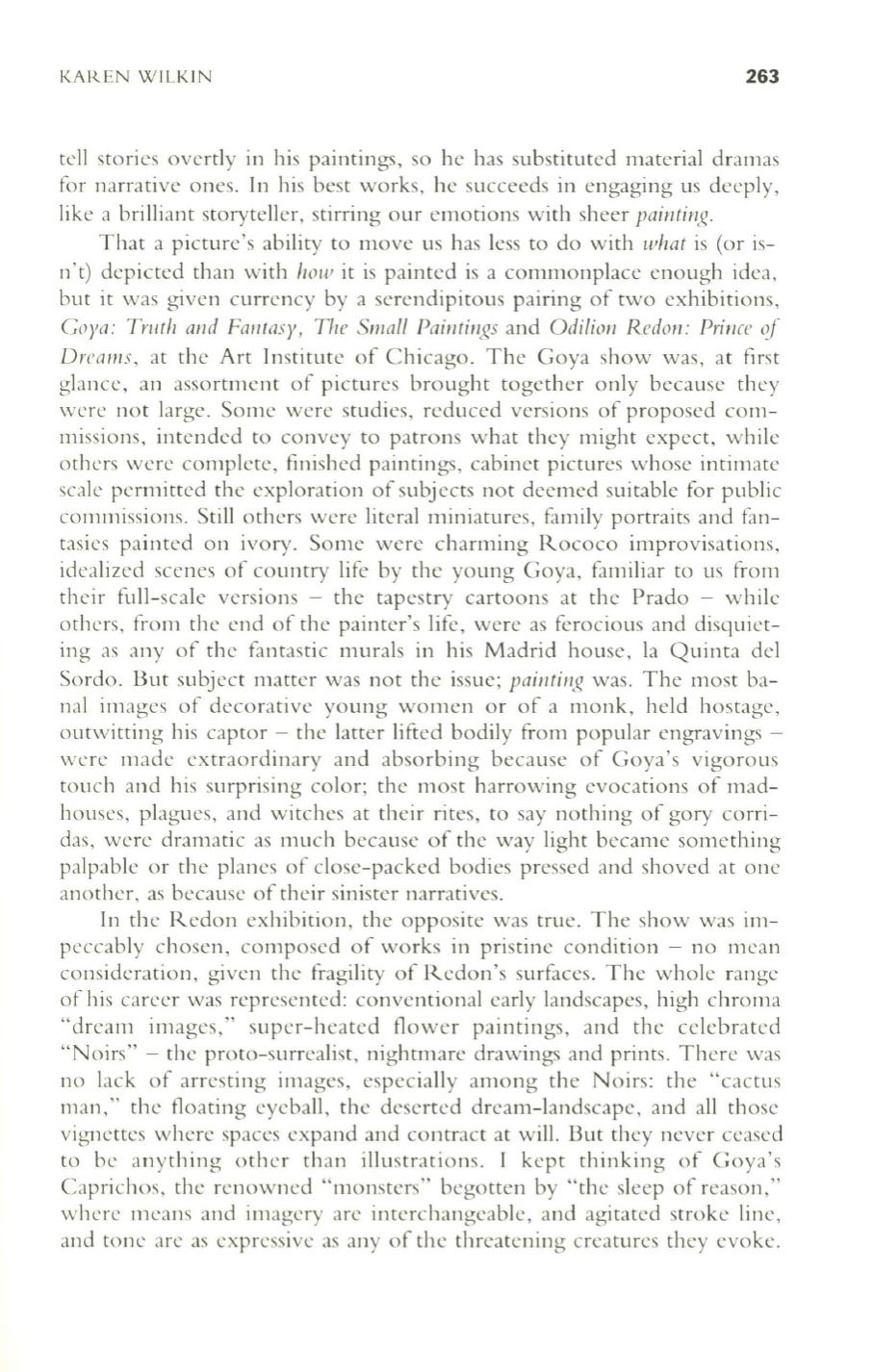
KAREN WILKIN
263
tdl stories overtly in his paintings, so he has substituted material dramas
for narrative ones.
In
his best works, he succeeds in engaging us deeply,
like a brilliant storytell er, stirring our emotions with sheer
paintillg.
That a picture's ability to move us has less to do with
what
is (or is–
n't) depicted than with
hOlli
it is painted is a commonplace enough idea,
but it was given currency by a serendipitous pairing of two exhibitions,
Coya: Trllth alld Falltasy, The Small PailltinJ?s
and
Odilia
II
Redol1: Prill(1'
of
Dreallls,
at the Art Ins titutc of Chicago. Thc Goya show was, at first
glance, an assortment of pictures brought togcther on ly because they
were not large. Some were studies, reduced versions of proposed
COI11-
missions, intendcd to convey to patrons what they might expect, whi le
others were complete, flnishcd paintings, cabinet pictures whose intimate
scale permitted thc exp loration of subjects not decmed suitable for public
commissions. Still others werc litcral miniaturcs, family portraits and fan–
tasies painted on ivory. Some were c harming Rococo improvisations,
idealized scenes of country life by the yo ung Goya, fami li ar to us from
their full-scale versions - the tapestry cartoons at the Prado - while
others, from the end of the painter's life, wcre as ferocious and disquiet–
ing as any of the fantastic murals in his Madrid house, la Quinta dd
Sordo. But subject matter was not the issuc;
pailltin<<?
was. The most ba–
nal images of decorative young women or of a monk, held hostage,
outwitting his captor - the latter lifted bodily from popular engravings -
were made extraordinary and absorbing because of Goya's vigorous
touch and his surprising co lor; the most harrowing evocations of mad–
houses, plagues, and witches at their rites, to say nothing of gory corri–
das, were dramatic as much because of the way li ght became something
palpable or the planes of close-packed bodies pressed and shoved at one
another, as because of their sinister narratives.
In
the Redon exhibition, the opposite was true. The show was im–
peccably chosen, composed of works in pristine condition - no mean
consideration, given the fragility of Redon's surfaces . The whole range
of his career was represented: conventional earl y landscapes, high chroma
"dream images," super-hcated flowcr paintings, and the celebrated
"Noirs" - the proto-surrealist, nightmare drawings and prints. Thcre was
no lack of arrcsting images, cspeciall y among the Noirs: the "cactus
man," the floating eyeball, the deserted dream-landscape, and all those
vignettcs where spaces expand and contract at will. But they ncvcr ceased
to be anything other than illustrations. I kept thinking of Goya's
Caprichos, thc renowned "monstcrs" begotten by "the sleep of reason,"
where means and imagery are intcrchangeable, and agitated stroke line,
and tone are as expressive as any of the threatening crcaturcs thcy evoke.


